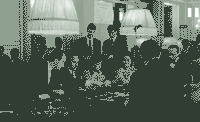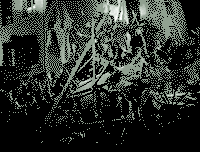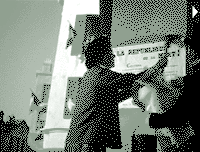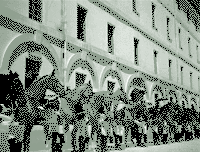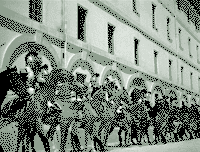VILLAGE life lies at the heart of Solomon Islands. So its future fate has profound implications to the continued existence of the nation.
For the village is not simply a people’s residential site but it is shorthand for a completely different way of living than found in more developed parts of the world; a symbol of and a code word for the reality in which the overwhelming majority of our people choose to live.
The Solomons is most profoundly a nation of villages! 84%+ of our people live, work and exist in these settlements which are much more than dormitory sites. Children are born in, grow up and dwell in a particular village because it’s very location attests to the presence of life’s essential resource base.
It is the place of food production, house materials, water for drinking, cooking and washing, medicine, fuel supply, real estate, recreation, etc. etc. These are the material side of life.
But culture, politics, economics, life education, security, world view, etc. are an essential part of the reality of the village as well. All the stuff a person needs for basic living is found in the village.
Many in modern society, however, can and do move around to different parts of their country, choosing to live closer to work commitment or to enjoy better weather conditions or whatever.
For the Melanesian, leaving the ancestral land base, at least mentally, is often seen as but a temporary departure, with a strong intention, although not always followed through, of returning one day to one’s roots. Hence, in the Melanesian mind the village is not a temporary stop along life’s road but a permanent life structure.
However, the outsider, those born and raised in different societies, especially those living the cash economy, assume that Solomon Islands is evolving, slowly of course, towards a miniature version of the capitalist West. Hence to prepare for this kind of future requires an economic system, legal framework and political life reflective of those in advanced Western democracies.
The question, however, must be; is this an accurate assumption? Are the Solomons inevitably headed in that direction or is the nation trying to carve out for itself a different kind of nation. If in truth it is traveling towards a predominate cash economy, how long will this journey take?
The 1976 national census found that the Solomons urban population–Honiara, Gizo, Auki, Kira Kira, etc. etc.–worked out to be 12% of the population.
More over, it was widely accepted by many that by the turn of the century, almost 30% of Solomons’ population would have already flooded into the nation’s urban and peri-urban areas. Yet, the 1999 national census found something different. It established that only 16% of our people had taken up urban residence.
In a real sense Solomon Islanders were bucking a global trend whereby the bulk of rural people in other countries were drifting towards bigger and bigger urban centres. Some of the largest cities–Shanghai, Delhi, Jakarta, etc.–had more than 10,000,000 people and were growing by leaps and bounds yearly.
Over a 23 year period, then, Solomons urban growth had been a modest 4% rise much less than what had been predicted. The bulk of our people, contrary to expert predictions, had remained in the country side.
The present government as well as the previous Sogovare one both recognized this basic truth and built up national development plans emphasizing Rural Advancement and the Bottom Up Approach.
Each December, for instance, the nation witnesses a mass exodus of city people out of Honiara back to the village. The city noticeably thins out when its citizens head for different provinces but knowing full well that their home villages have little piped water, proper toilet facilities and a diet, for the most part, bland.
What is it then that continues to attract so many of them back to village life even if only for a few short weeks?
Some say that returning to village life, even for a short period, is a way or recharging internal batteries for the rest of the year of town living. I go a step further! Returning to village life is a re-confirmation of the Melanesian world view: they do not own the land but the land owns them!
Will the village disappear? No, far from it! Solomon Islands’ village life will not only not disappear but will grow stronger during the 21st century. In proof let the Social Unrest years speak out!
This 1998-2003 period witnessed a state seriously failing in its obligations to its citizens. It was the village alone that kept the nation together, not the government.
What lessons should RAMSI be learning from the idea that the village and all it stands for will strengthen? A strong case can be made that the Social Unrest years are fundamentally a cry for a different kind of Solomon Islands and not one which is a pale imitation of metropolitan nations.
A nation that understands and incorporates the villagers’ world view rather than one that imposes a new world vision.


